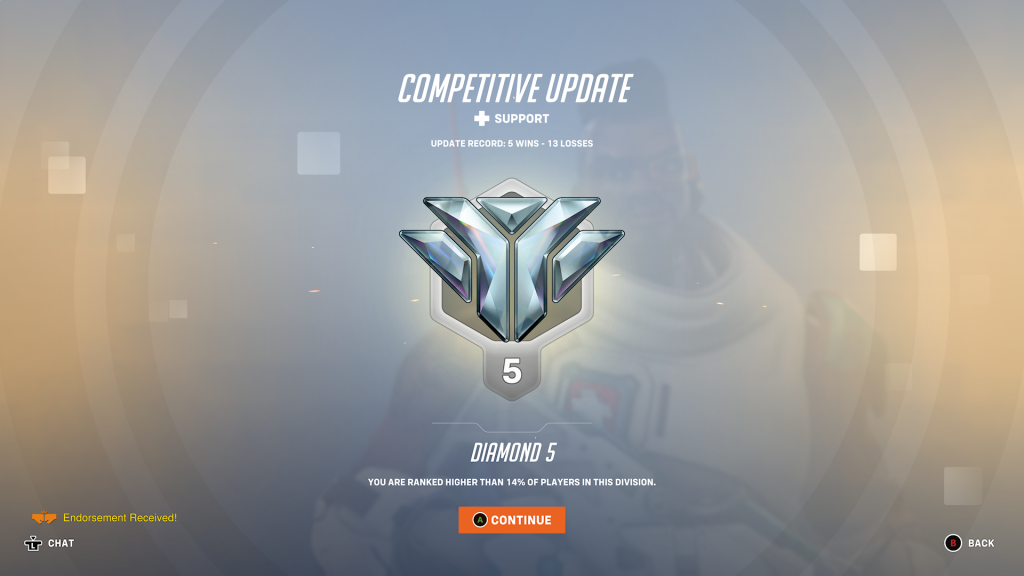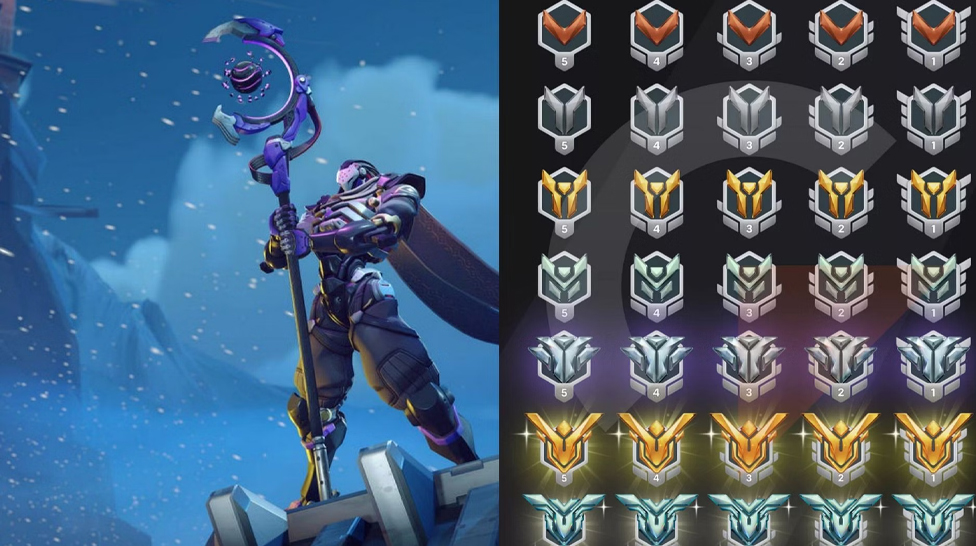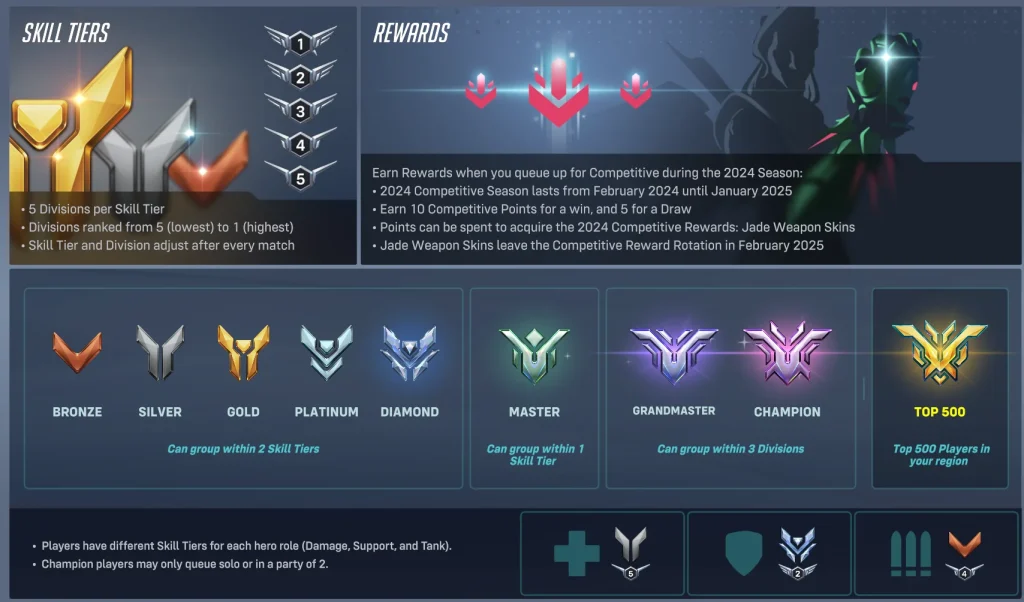Introduction
Since the launch of Overwatch in 2016, competitive play has been a cornerstone of the game’s long-standing popularity. Players who engaged with the competitive mode did so not just for fun, but to measure their skill and strive for improvement within a clearly defined ranking structure. When Blizzard released Overwatch 2, it was clear that major changes were coming, especially to the competitive ecosystem. With a shift to a free-to-play model, the developer saw an opportunity to evolve the ranking system into something more meaningful, transparent, and rewarding. In 2025, the Overwatch community continues to adapt to the new ranking system implemented in Overwatch 2, which differs significantly from the previous version many fans had grown accustomed to. This article takes a deep dive into how the new ranking system works, what has changed from the past, how it affects gameplay experience, and what players can do to climb effectively in the current competitive landscape. Please visit this.
The Basics Of The New Competitive Ranking System

In the original Overwatch, players were assigned a visible Skill Rating (SR) number after completing placement matches, and this number was used to determine their rank—from Bronze to Grandmaster. However, with the introduction of Overwatch 2, Blizzard scrapped the numeric SR system in favor of a tier-based ranking format. In the new system, players are grouped into tiers—Bronze, Silver, Gold, Platinum, Diamond, Master, and Grandmaster—with five divisions within each tier. For example, a player might be placed in Silver 3 or Diamond 1. The new structure aims to reduce the obsession over incremental SR changes and instead focuses on meaningful progression over time. Players can only view their rank updates after completing a set number of wins or losses, usually 5 wins or 15 losses, which encourages longer-term focus and consistency rather than daily micromanagement of rank points.
Placement Matches And Progression Mechanics
The placement system in Overwatch 2 has also changed to fit this new format. Rather than playing 10 placement matches and being assigned a specific SR, players begin their competitive journey with hidden matchmaking rating (MMR), which is carried over from previous play or inferred from their performance in unranked games. As players accumulate wins and losses, their MMR is adjusted behind the scenes, and their visible rank updates occur after specific milestones. This design was intended to curb the anxiety many players felt over seeing their SR fluctuate after every match. By only updating visible rank after a significant number of games, players are less likely to experience rank-based burnout. Furthermore, the new system puts more emphasis on recent performance than lifetime statistics, meaning that a strong performance over a week of games can propel a player up divisions faster than the old system ever allowed.
Transparency And Hidden MMR
One major point of contention within the Overwatch community revolves around the transparency—or lack thereof—of the new ranking system. While the new format does a better job of segmenting players by skill level, many users find the hidden MMR aspect frustrating. Since players cannot see the actual numerical rating that defines their skill tier, it can be difficult to understand how close they are to ranking up or why they may have deranked. Blizzard has addressed this concern by offering periodic performance summaries and match insights, but these reports are still high-level overviews that lack the detailed breakdowns found in some other competitive games. Nevertheless, the hidden MMR system helps prevent rank manipulation and smurfing to some degree, and it allows the developers more control over balancing matchmaking quality.
Role Queue And Role-Based Ranks
One of the most significant enhancements in Overwatch 2’s new ranking system is the continuation and refinement of Role Queue. Players can now select Tank, Damage, or Support roles independently, and each role has its own separate rank. This allows for more accurate matchmaking and progression, especially for players who are highly skilled in one area but less experienced in another. For example, a player might be Diamond in Support but only Silver in Tank. This has led to a more nuanced understanding of player performance and a more balanced competitive environment. Role-based ranking also rewards specialization and encourages players to invest time into mastering specific aspects of the game. The system also adapts over time based on hero balance changes, making it a dynamic and evolving challenge for those looking to excel in multiple areas of the game.
Rank Decay And Inactivity Penalties
Another key feature of the new Overwatch ranking system is how it handles rank decay and inactivity. In the original game, players in high ranks like Diamond and above would experience rank decay if they failed to play a certain number of games each week. In Overwatch 2, Blizzard has adjusted this mechanic to reduce pressure on casual players. Now, inactivity does not cause immediate rank loss, but the hidden MMR may decay slightly over time if a player does not participate regularly. This subtle approach helps maintain matchmaking balance without punishing players who take breaks. It also ensures that returning players are matched appropriately and do not face overly difficult matches upon their return. The system strikes a careful balance between competitive integrity and flexibility for player schedules.
Match Quality And Smurfing Concerns

The shift in the ranking system has also affected match quality. One of the biggest issues Overwatch faced in its original iteration was the prevalence of smurfing—where highly skilled players create new accounts to dominate lower-ranked matches. With the new ranking format, smurfing has become slightly more difficult due to the way MMR works. Since performance in early matches is closely monitored, most smurf accounts are quickly adjusted to the correct skill tier. However, the problem hasn’t been eliminated entirely. Match quality in lower tiers still suffers occasionally from players who are either throwing games or climbing quickly through the ranks. Blizzard continues to refine matchmaking algorithms to detect and counteract these behaviors. On the whole, however, match quality has improved, particularly in mid-tier levels where players report fewer one-sided games and more evenly balanced team compositions.
Seasonal Resets And Competitive Rewards
In Overwatch 2, the ranking system is also influenced by seasonal resets. At the start of each new competitive season, player ranks are recalibrated based on previous performance, MMR, and a fresh slate of games. However, this does not mean players are reset entirely. The system tends to place them within a reasonable range of their last season’s final rank, although some fluctuation is to be expected. This seasonal adjustment allows for a soft reset that maintains progression while ensuring that long-term players do not remain stagnant. Alongside the ranking system, seasonal rewards provide incentives to participate regularly. Players earn competitive points (CP) based on their final rank and number of wins, which can be used to purchase golden weapons and other cosmetic rewards. These incentives create a strong end-of-season drive to push ranks and improve performance before the ladder closes.
Impact Of Hero Balance And Meta Shifts
The new ranking system is also deeply affected by hero balance changes and meta shifts. Blizzard’s regular patches, hero reworks, and ability adjustments can cause certain heroes to become more dominant, affecting the ease with which players climb in their chosen roles. For instance, a buff to a Tank hero might make climbing easier for players in that role, while a nerf to a popular Support character could have the opposite effect. The ranking system adapts to these changes by recalibrating MMR expectations over time, but players must also be adaptable. Understanding the current meta, mastering a few high-impact heroes, and staying updated with patch notes are all essential to success in competitive play. Because of this dynamic, climbing the ranks in Overwatch 2 is not just about mechanical skill but also about game sense, strategy, and flexibility.
How Rank Reflects Player Skill In The New System?
One ongoing debate within the Overwatch community is whether the new ranking system accurately reflects player skill. In many ways, the system is more holistic than its predecessor. It considers win rate, consistency, and role-specific performance over a larger sample of games, which reduces the impact of one-off bad performances. However, some players feel that the system still fails to reflect true skill due to matchmaking inconsistencies, toxic teammates, or forced role compositions. While these issues are not exclusive to Overwatch, the complexity of team-based gameplay makes it difficult to perfectly capture individual contribution. Nevertheless, the ranking system has been designed to reward perseverance and adaptation. Over time, most players do tend to settle into ranks that mirror their overall effectiveness, even if it takes a few seasons to stabilize.
The Psychology Of Ranking In Competitive Play
One of the subtle but powerful impacts of Overwatch’s new ranking system is the psychological shift it introduces. By removing the numeric SR value and implementing periodic rank updates, Blizzard has reduced the short-term stress and obsession many players felt after each match. This new approach encourages players to focus more on team play, communication, and long-term improvement rather than compulsively tracking every point gained or lost. The five-win update threshold also adds a level of suspense and satisfaction, as players await their next rank reveal with anticipation. However, it can also lead to confusion when players feel they’ve performed well but receive a lower rank than expected. Blizzard has worked to improve clarity around rank updates, but there is still room for growth in how player progress is communicated. The balance between transparency and psychological well-being is delicate, but Overwatch 2 has made notable strides in this area.
The Role Of Competitive Integrity In The New System

Maintaining competitive integrity is crucial for any ranked system, and Blizzard has taken multiple steps to ensure that the Overwatch 2 ranking system remains fair. Advanced anti-cheat measures, behavior reporting tools, and endorsement systems all contribute to a healthier competitive environment. Furthermore, rank restrictions have been put in place for group queues to prevent boosting or unfair matchmaking. For example, a Bronze player cannot queue with a Grandmaster unless in specific group formats, preserving the integrity of each match. Ranking System, While no system is perfect, Overwatch 2’s ranking model is more resistant to manipulation and bad-faith behavior than its predecessor. Ongoing updates and community feedback help Blizzard fine-tune the experience, and players have responded positively to many of the changes implemented since the new system’s debut.
Conclusion
The Overwatch new ranking system introduced with Overwatch 2 has redefined how players engage with competitive play. By shifting from numeric SR to a tiered and division-based model, Blizzard has created a more psychologically rewarding and strategically deep progression system. With role-specific rankings, performance-based updates, and seasonal recalibrations, the new structure offers a more flexible and dynamic competitive experience. While some concerns remain around transparency, match quality, and smurfing, the overall direction of the new system is a step forward for the franchise. As of 2025, the Overwatch ranking system continues to evolve, shaped by player feedback, gameplay changes, and a commitment to maintaining competitive integrity. For players who want to climb the ladder, improve their skills, and enjoy a more thoughtful approach to ranked play, the new Overwatch system provides the tools and structure to make that journey rewarding.

